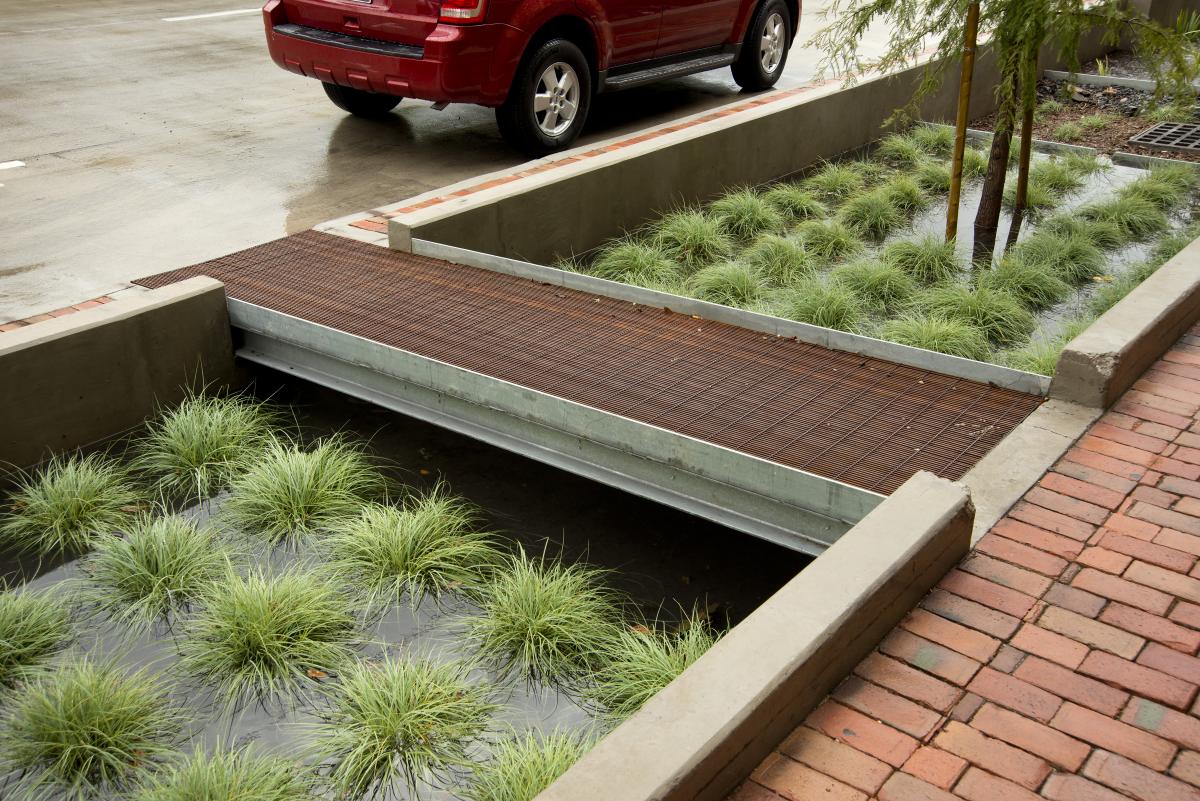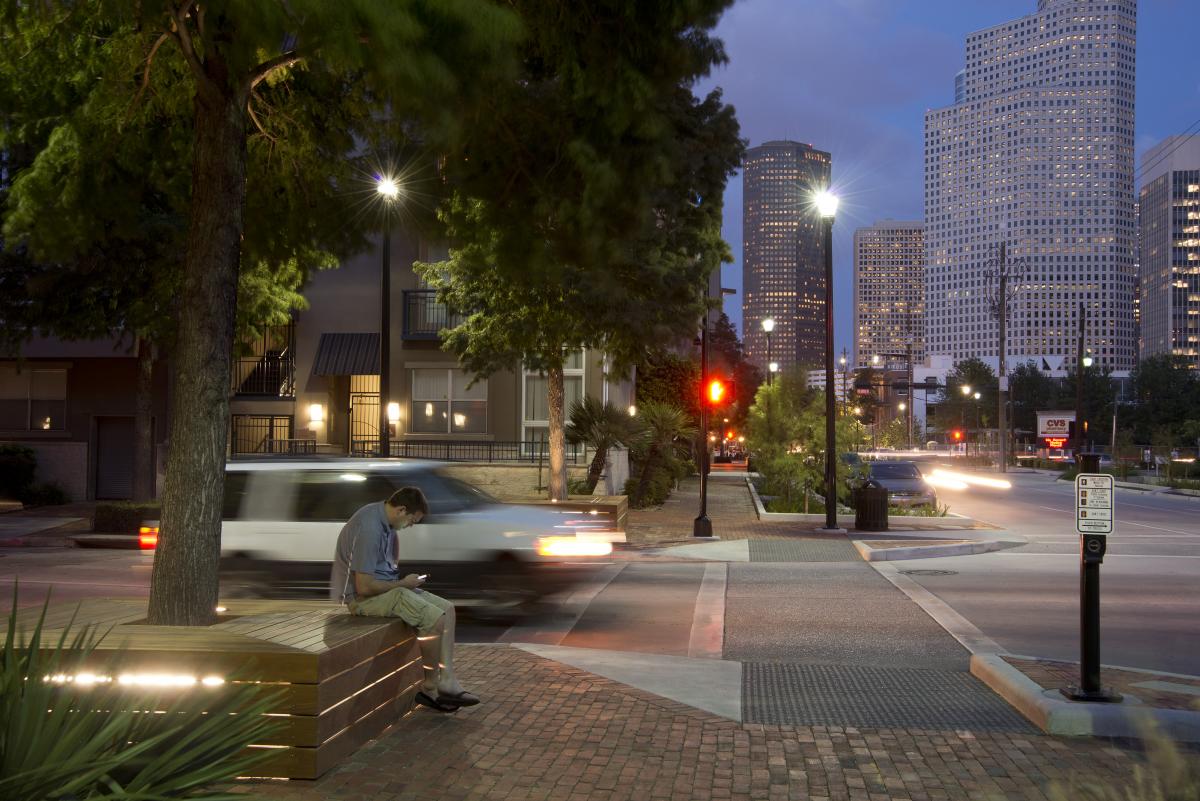This street revitalization effort utilized aggressive low impact development (LID) strategies to improve stormwater quality, offset carbon emissions and redefine a previously auto-dominated commuter thoroughfare as a livable center with significant improvements to the pedestrian environment.
The project is located on the western edge of Houston’s Midtown district, one of the city’s largest and oldest central neighborhoods. The 13-block street reconstruction envisioned a highly programmed, pedestrian friendly environment that would encourage private re-investment in the area. It represents a renewed effort by the district to connect with their current demographics, modern infrastructure demands and long term sustainability goals, making the project a key element in the district’s larger effort to lead the charge to diversify and re-populate areas around Houston’s downtown.

Environmentally, the design utilized a series of rain gardens to improve urban stormwater quality through biofiltration, removing 33% of onsite stormwater from the storm sewer system. Additionally, newly planted trees have already reduced ambient air temperatures and will eventually more than double the available shade within the pedestrian environment. As the highest rated project in the history of the Greenroads program and the first ever in Texas, the project has set a new benchmark for similar efforts.
A total of 4% of the construction budget was dedicated to custom elements with artistic value (four times more than the standard 1% for Houston projects). These custom elements include benches, tree surrounds, seat blocks, rain garden signage, context sensitive paving patterns, bike racks and an information kiosk, all of which were designed specifically for the district’s brand.

“This Houston street was bare, uninviting and unmemorable when the design team confronted it,” wrote Adele Chatfield-Taylor, “and despite its ungainly width, or perhaps because of it, they have transformed this nondescript strip into a neighborhood, a park, a garden, a shelter from heat and rain, a place to shop and dine, and a destination unto itself. With ingenious place-making and high-quality additions – the right trees and plants, durable well-made furniture, distinctive pavements, places to walk the dog as well as jog, bike, walk, park, sit, and meet – they have created a safe, inviting, sustainable, better functioning and more beautiful environment, that is an integral part of a part of a living city.”
Project Details
Bagby Street Houston, Texas
Year
2013
Characteristics
Environment
Street Design
Charter Award
Charter Award
Charter Award
